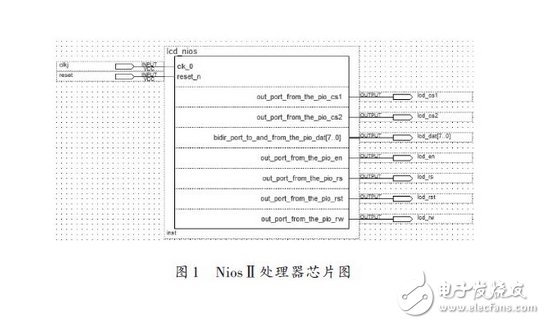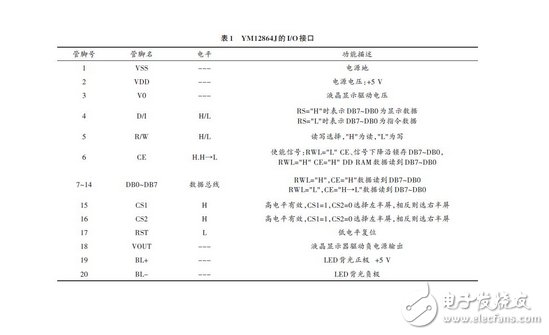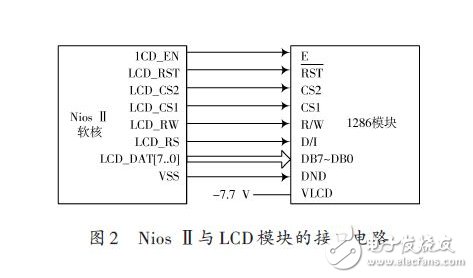LCD display system solution based on embedded processor and SOPC technology
The Nios II is a configurable 16/32-bit RISC processor that combines a rich set of peripheral-specific instructions and hardware acceleration units to provide an extremely flexible and powerful SOPC system at a low cost, allowing developers to integrate them according to their actual needs. Nios II is supported by all ALTEra mainstream FPGA devices. Combining the LCD driver with the Nios II results in a highly scalable, versatile IP core that solves the problem of drive differences between different models of LCD screens. 1 NiosII soft core processor and SOPC Designing the Nios II core takes up less than half of the FPGA resources and can calculate more than a factor of more than one. NiosII embedded processor performance exceeds 200 DMIPS, 32-bit data and address, 32-bit instructions, 32 external interrupt sources and 32-bit general-purpose registers; Nios II supports dozens of peripheral options, developers can choose the right peripherals Get the most appropriate combination of processors, peripherals, and interfaces. Now, complex functions such as MCU, DSP, PCI bus control and various control algorithms can be implemented on a single FPGA chip. FPGA chip density has reached a million gate level. Due to the increase in FPGA chip density and the continuous updating of EDA development tools, it has become possible to implement SOC using FPGA devices. This technology is called embedded SOPC technology. SOPC technology has both ASIC-based system-on-chip design features and template-level design features, with reconfigurable, efficient and automated design methods. Altera's Nios II provides designers with FPGA-optimized embedded processors and a comprehensive solution for SOPC. The Nios II processor has a comprehensive software development kit that includes an integrated development environment (IDE), compiler, MC debugger, TCP/IP stack, and real-time operating system (RTOS). Designers can use the SOPC Builder system development tools in Altera's QUARTus II development software to create custom CPUs and peripheral circuits to get the processor system they need. The use of SOPC Builder development tools to create a dedicated processor system requires SOPC's internal processor chip selection and software design. The SOPC Builder tool configures the embedded processor chip of a highly integrated SOPC system by loading the definition of the Nios II soft core and peripheral interfaces. Figure 1 shows the Nios II processor of a liquid crystal display SOPC system with main ports including reset signals, global input clocks, and some I/O ports. Because the Nios II is implemented in the FPGA chip, it can be connected to the external device through the pins of the FPGA, or directly connected to other circuits in the FPGA chip. Unused resources on the FPGA can still be configured to be used by other modules to achieve system SOC integration. 2 LCD controller selection Here is a YM12864J liquid crystal display module, which has integrated SED1330 as the controller of the liquid crystal display. Compared with similar products, its main features are: (1) I/O controllers with strong functions; (2) The instruction is simple; (3) 8-bit parallel I/O port; (4) Mixed display of text and graphics. The I/O interface of YM12864J is shown in Table 1. 3 FPGA and LCD interface circuit The liquid crystal display selected in this design has been integrated with the controller, and the peripheral circuit is relatively simple, only the connection between the FPGA chip and the liquid crystal control module. There are two options to consider here. The first is to use the LCD module as an external memory and use the data and address bus of Ext_Shared_Bus to control it. The second is to operate the LCD interface as a normal external device GPIO. The LCD data and read and write enable, chip select are controlled by the operation of the I/O port. Generally, for a less complex system, it is a relatively simple method to regard the external device as a normal PIO. Therefore, the second scheme is adopted here, and the interface circuit of the Nios and LCD module is as shown in FIG. 2 . High Power Light,Led High Power Lamp,High Power Led Light,Led High Power Lamp Price Changxing Fanya Lighting Co.,Ltd , https://www.fyledlights.com

